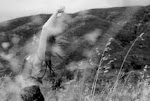There are certain things that happen every day that prevent our country from being as good as it could be. You would easily notice these things if you visited.

People are always complaining for varied reasons. Protests are a common reaction to some sort of unjust treatment, some injustice. There is a contrast between people that accept and respect rules and those that don't. This is generally a reason for
arguments. In situations where you would expect to get a mature response from a citizen you receive the opposite.
For example, people here like to cut in line (at an airport, bus line, store, bank, etc.). Some will take your parking space even if you were there first. People will even take parking spaces reserved for pregnant women or handicapped individuals. When you stop at a red light or if you’re traveling in public transportation, you often get approached by people claiming to belong to an institution asking you to make a contribution. Sometimes they give a pretty good speech and convince you; even if they don’t, you somehow end up giving them money.
We’ve already covered the issue of disobeying traffic rules. It’s a classic.
Most of the time, you
can get away with almost anything. If by some remote chance you do get stopped while doing something wrong when you’re driving, you will either be "invited" to bribe the police officer in order to avoid getting a ticket or get away with some lame excuse.
If you park your car on the street, you will be approached by "cuida coches" (unofficial car keepers) and be told to pay an arbitrary amount of money for a service that you have not requested (the service of looking after your car). Most of us will pay, as we care for our car and don’t want an angry car keeper taking out his anger on it, do we? If you don’t pay, you may find a scratch on your door, usually done with a key, pen or sharp object. Although illegal, no one is there to keep these people from doing this.
A typical way of protesting about an issue is to block streets and freeways (this method is also used by unions and student groups) and to make noise with their "bombos" (a local percussion instrument). Does this attitude solve anything? Do they think about the people that are stuck in the riot? Does it occur to them that these people could be late to work? Protesters would answer: "who cares!" and go on making more noise or, why not, burning a few tires.
This is pretty much a portrait of daily life in Argentina. Why could this be?
When Argentina started out as a nation in the 1800's, our leaders had clear
ideas, they wanted to become a modern, developed nation. Argentina had
a democratic government and democracy allowed an open debate on
important issues in a professional way. Democracy had made everyone more tolerant.
In the 1800's, it was thought that education, hard work and patience were
the way towards developing personally and as a Nation.
In the 1900's the government's capacity to exchange ideas deteriorated throughout all the different governments Argentina had – Conservative, Radical, Peronist, Military. Many leaders chose friendship, family ties and political loyalty instead of merit to fill government jobs. These decisions, among many others, took a toll and hindered the country’s true potential. These decisions drifted Argentines away from their road towards sustainable progress and order and put them on their way towards laziness, chaos and a desire for instant gratification. It is now that matters, and by being clever, we can achieve what we want, even if the means to achieve it it are not entirely right.
We call that "viveza criolla", the unofficial daughter of intelligence, it has
little to do with effort and a lot to do with individualism.
In a mature society that works well, institutions function as they should, jobs are
assigned to the people that are most qualified for them, values exist and
are respected, ideas are put into practice and education is highly valued.
Felix Luna, a famous Argentine historian once said he was unwilling to
write about certain topics in Argentinian history because it made him feel
ashamed. We have many virtues as a country. We are blessed in so many ways.
I wish we would just wake up and change our least appealing features for good.
Post by Valeria Mendez Cañas
Photo: Buenos Aires, 1920.
















































 People are always complaining for varied reasons. Protests are a common reaction to some sort of unjust treatment, some injustice. There is a contrast between people that accept and respect rules and those that don't. This is generally a reason for
People are always complaining for varied reasons. Protests are a common reaction to some sort of unjust treatment, some injustice. There is a contrast between people that accept and respect rules and those that don't. This is generally a reason for









